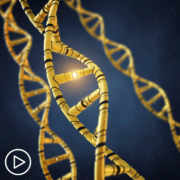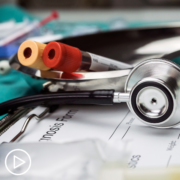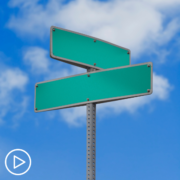CLL and BTK Inhibitor Treatment: What Are the Risk Factors?
CLL and BTK Inhibitor Treatment: What Are the Risk Factors? from Patient Empowerment Network on Vimeo.
What’s important for chronic lymphocytic leukemia (CLL) patients to know when considering BTK inhibitor treatment? Expert Dr. Ryan Jacobs explains some cardiac risk factors with BTK inhibitors and patients who might want to consider other treatment options.
Dr. Ryan Jacobs is a hematologist/oncologist specializing in Chronic Lymphocytic Leukemia from Levine Cancer Institute. Learn more about Dr. Jacobs.
Download Resource Guide | Descargar Guía en Español
Related Programs:

|

|

Are There Signs of Chronic Lymphocytic Leukemia Progression? |
Transcript:
Lisa Hatfield:
So this patient is asking, “For patients who may be eligible for BTK inhibitors, are there specific comorbidities that might contribute to adverse side effects?”
Dr. Ryan Jacobs:
Yeah, so we screen…all BTK inhibitors have some cardiac toxicity. They have been shown with the second-generation BTK inhibitors to have less cardiac toxicity than ibrutinib, specifically atrial fibrillation. So if you have atrial fibrillation, maybe that’s a reason why you might go on venetoclax first as opposed to a BTK inhibitor. But it’s not a contraindication to getting a BTK inhibitor if the atrial fibrillation is under good control. Other cardiac risk factors would include difficult to control hypertension at baseline, or heart failure. These are all things that might make us think twice about using a BTK inhibitor as our first therapy, because venetoclax has no cardiac toxicities.
The other thing to consider is BTK inhibitors all to a degree have, and I describe it to patients, like an aspirin-like effect on the platelets. They do interfere with the platelet binding, which so universally, patients will know to varying levels some easier bruising. And if patients are on, because of say, they’ve had a heart attack in the past and they’re on aspirin at baseline, or what would even be more concerning if they were on a drug like Plavix because they’ve had a stent placed, that would be something that would really concern me and would definitely push me more towards venetoclax (Venclexta), that again, doesn’t have those anti-platelet interactions. Also, patients who are on blood thinners because of a history of blood clot or atrial fibrillation, there is the potential increased risk for bleeding and bruising there as well. None of these are absolute contraindications, they’re just all what goes into the blender, if you will, of putting lots of information in and coming up with the best treatment decision as personalized for the CLL patient. We’re blessed to have multiple options, but it does make it more of a challenge to find the “best” option.



